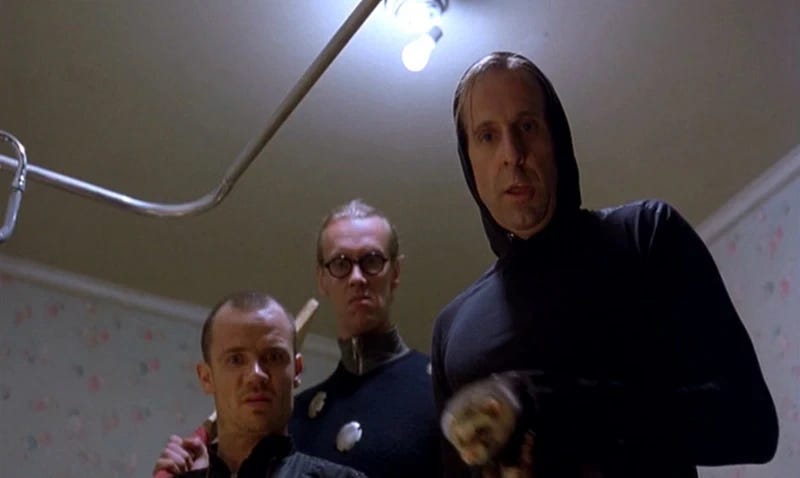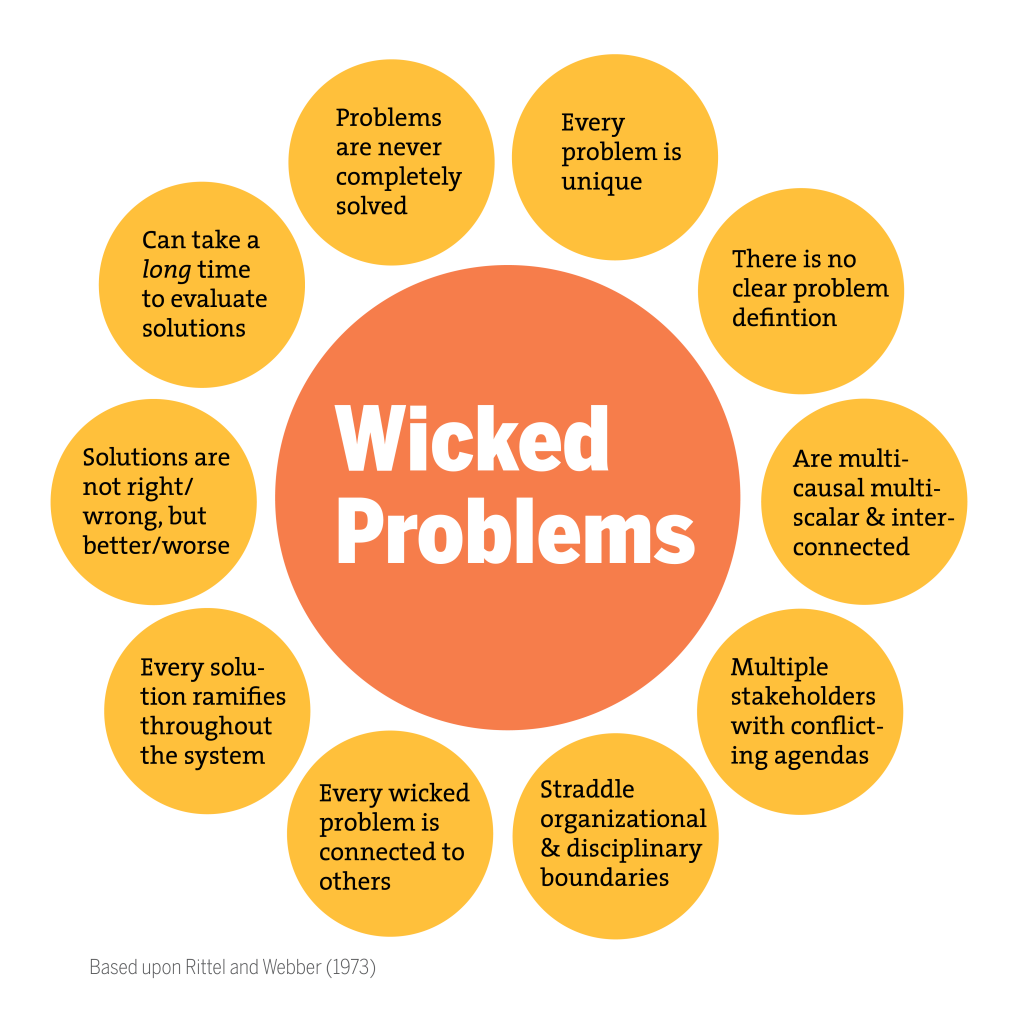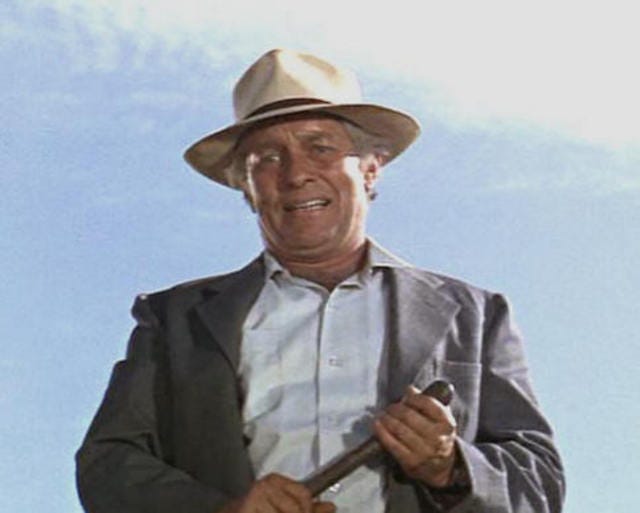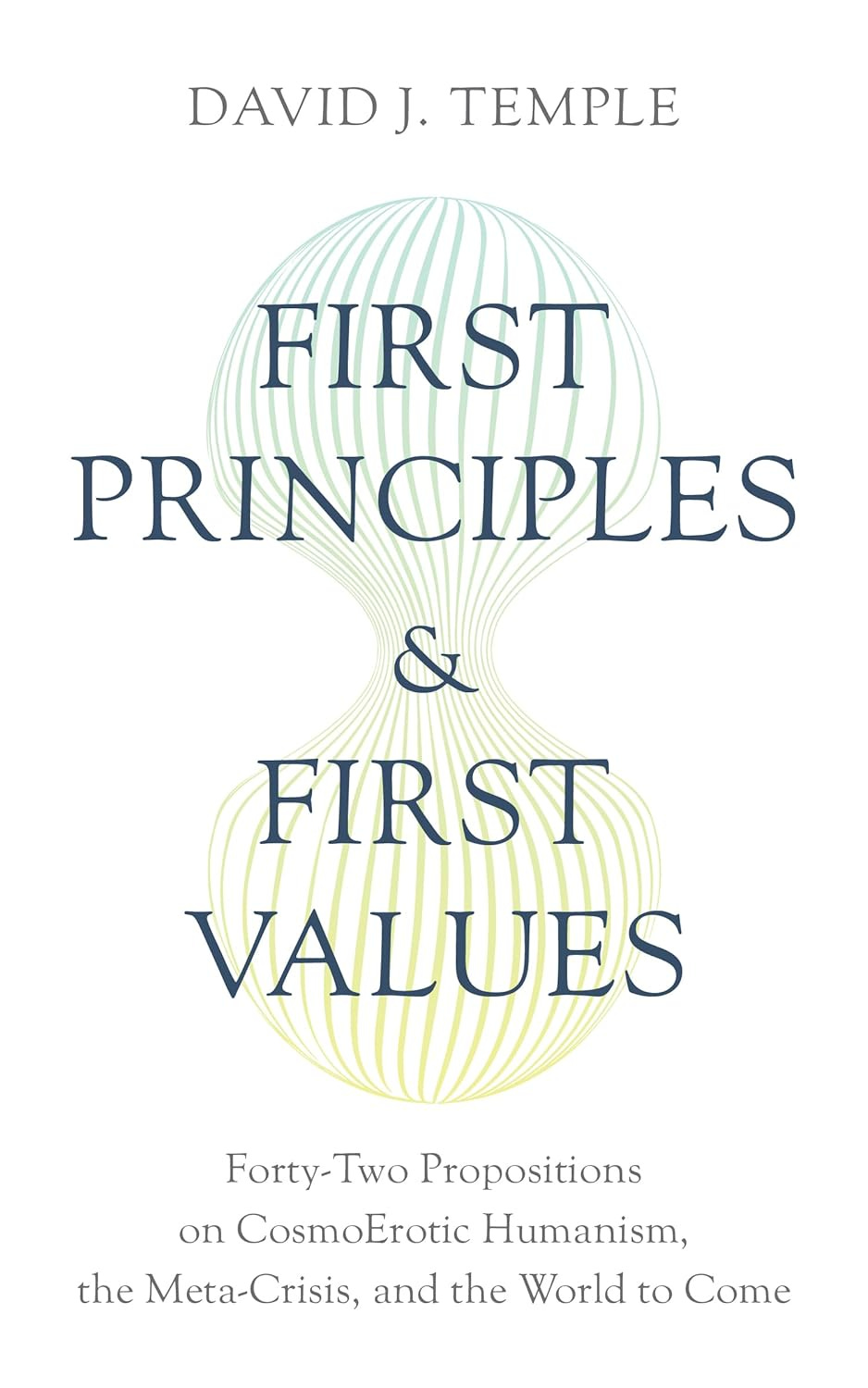Note 1: This essay became bigger than I intended despite
’s valiant efforts, so your email provider may not transmit the entire thing. Just click on the title and it will open in your browser/Substack app, or click on “View entire message”.Note 2: That pesky toothache from last week required a root canal, antibiotics, and a crown (Yay Modernity!), but I’m on the mend. Onward to our scheduled programming.
I was in junior high in 1991.
It was the heyday of what became known as grunge, a particular rock & roll sound coming out of Seattle. Pearl Jam’s debut album (Ten) came out that year, and their breakout hit was a song called Jeremy.
For those who aren’t Gen X or older Millennials, the song is very loosely based on a Texas high school student named Jeremy Wade Delle, who took his own life in front of classmates in 1991. Emphasis on very loosely—the real Jeremy’s life bears little resemblance to the song, and this site exists as a memorial. Eddie Vedder, Pearl Jam’s lead singer, read a newspaper article about the incident and later said the song was about “the lack of attention paid to kids who really need help, and whose pain is invisible until it explodes.”
In 1991, the notion a kid would bring a gun to school and commit violence was far-fetched. While there had been school shootings in the 70’s and 80’s, these were few and far between. I didn’t realize it at the time, but I went to school during the brief era after nuclear duck and cover drills and before active shooter ones.
In philosophy, nihilism is the view that values lack objective foundation and life has no inherent meaning or purpose; pushed to the extreme, it can reject all moral claims and even valorize destruction. It comes from the Latin nihil, meaning nothing.
I don’t know why Delle did what he did. It’s clear he was in a great deal of pain. Jeremy brought this tragedy into broader public consciousness. What changed after Delle’s act was shootings began to target classmates and workplaces.
On a recent Real Time with Bill Maher,
discussed the internet culture incubating humans before they commit these acts:Nihilism originally sprung up among disillusioned youth in Russia in the mid to late 1800s. According to the FBI, Nihilistic Violent Extremism is defined as “individuals who engage in criminal conduct within the United States and abroad, in furtherance of political, social, or religious goals that derive primarily from a hatred of society at large and a desire to bring about its collapse by sowing indiscriminate chaos, destruction, and social instability.”1 Some of this is driven by the Meaning Crisis—a mainly western phenomenon deriving from modernity and postmodernity finally outrunning the premodern moral frameworks they survived on for several centuries.
There’s a toxic blend of hopelessness, pain, and a desire live on through a spectacular act of violence—to make a black mark on the fabric of reality. My speculation is some of these mostly young men want the rest of the world to feel the pain churning inside them.
And like everything else, these events are gobbled up into the maw of political conflict, repurposed as partisan weapons to wield against the other side. Them. I’ll do a fifth generation warfare deep dive at some point to get at this brave new world we’re in, where every mind is now a conflict zone.
In our radioactive and fractured media ecology, divining each shooters’ true motivation—what alchemical brew of left/right/nihilistic coded intentions prompted their actions—proves a challenge. I struggled with this essay because it’s hard to untangle the political from the mental health from the lack of meaning in life. It’s messy.
There is a political component to some of these acts—I don’t want to minimize or discount that. But there is also signal under the noise, and I’m trying to tease it out.
The rise of active shooters/political violence in this moment belongs to a category academic literature calls wicked problems. When scholars call something wicked, they intend a specific definition. It’s not wicked as in evil (although they are), or wicked as in “those waves were wicked, brosef.” Wicked problems in the academic sense are complex, open-ended challenges with no definitive formulation, and no single “right” solution—only better or worse trade-offs.
The term is meant to contrast such challenges with “tame” ones that can be addressed with more conventional methods.2 Other attributes of wicked problems include tangled causality, stakeholder conflict, irreducible uncertainty, and interventions that change the problem itself. Since the late 90’s, scholars in public policy, design thinking, and complexity science have extended the concept to include climate change, health systems, urban planning, and information disorder. Basically, lots of the metacrisis/polycrisis topics of concern.
It’s hard to even get consensus on the nature of a wicked problem. Here is an incomplete list of possible drivers, in no particular order:
Too many guns.
Too much violence in the media—movies and video games.
Declining religiosity.
Politics replacing religion, becoming existential.
The phones, the phones, the phones.
A culture that glorifies spectacle, drawn to spectacular violence like a moth to a flame.
Opportunistic political leaders of all stripes who do little to turn down the social temperature.
Political entrepreneurs/influencers of all stripes stoking fear and rage for clicks and eyeballs.
An interconnected social media ecosystem which rewards said fear and rage.
Lack of human connection.
Loss of individual meaning and purpose.
A dearth of local community.
Loss of a shared framework for reality.
Institutional decay and decline.
The massive, epochal shift from the literate “Gutenberg Parenthesis” to an oral, digital world culture.
Rapid technological and social change outpacing human cognitive ability to keep up (I did a book review of The Watchman’s Rattle which makes this case).
Each of us will weight these possibilities—discounting/minimizing some, and emphasizing/highlighting others, according to our experience, education, and worldview.
For most of human history, violence has been the norm. Many parts of the world are violent in the modern world. It’s possible these acts are simply part and parcel of a world speedrunning the enlightenment in reverse, as writers like
and have suggested.I’m trying to home in on one aspect, to consider the gaping void, the dark hole, the barren emptiness in the worldview of those who commit these acts.
And I keep coming back to value.
We aren’t communicating the value of value, in an inter-generational fashion.
Now, this assertion immediately begs the question—whose value? And who is this fucking royal we you’re referring to?3 You got a mouse in your pocket?4 Boom. Guilty. Great questions.
So, when I say we, I mean this western world that birthed modernity and postmodernity, that created wonders and horrific weapons and miraculous technology. When I say value, I mean value in the Pirsig-ian sense—what he lays out in his Metaphysics of Quality.
Pirsig's Perceptive Paradigm Primer
She came trotting by with her watering pot between those two doors, going from the corridor to our office, and she said, “I hope you’re teaching Quality to your students.“ This in a la-de-da sing song voice of a lady in her final year before retirement about to water her plants. That was the moment it all started. That was the seed crystal.
Two thinkers talking about value in a similar fashion are
and Zak Stein. My main takeaway from their recent work is value is embedded within existence. While there are others walking similar intellectual paths5, I am focusing on these two for the moment.Dempsey’s Universal Learning Process (ULP) frames cosmic evolution as learning: across scales, systems stay far-from-equilibrium (also known as staying alive) by acquiring meaningful information—signals that link an entity to its environment in ways that enhance persisting in time. Drawing on thermodynamics and information theory, ULP treats meaning as adaptive information, so “evolution” becomes the accumulation, compression, and reorganization of patterns that improve prediction, coordination, and flourishing. This is the progression from dissipative structures (whirlpools, tornados, flickering flames) to life, to minds, to culture. Here’s a bit I wrote about Dempsey’s theory earlier this year:
In First Principles and First Values, “David J. Temple” (a pen name for Zak Stein, Marc Gafni, and Ken Wilber) frames today’s meta-crisis as one of value, arguing we need a shared account of value that isn’t reducible to price or preference. Its core claim is Eros—understood as “allurement”—is both a first principle and first value of reality: from quarks to culture, each level is drawn into deeper intimacy and wider wholes by attractive value. In this framing, value is real and intrinsic, not merely subjective. It shows up at every level of emergence, and can be used to guide ethics, economics, and education.
The book seeks to ground science, policy, and meaning-making in a language of value that honors pluralism yet resists relativism (this is the move we must make to escape the postmodern maze). “Allurement” becomes the test for what genuinely binds and beautifies, in the true/good/beautiful sense of the word.
So What?
The rise of nihilism and associated violence to epidemic proportions this decade is a wicked problem. It will take an “all hands on deck”, “yes-and”, “all of the above approach” to address. An epidemiological approach, like fighting a complex disease that shifts and evolves in response to our actions. We have to build a little, test a little, and learn a lot, as my flamboyant and eminently quotable old commander Wyman Howard used to say. Some things will move the needle more than others, but we won’t know until we try.
Technology is not going anywhere— smartphones, social media, and AI are here to stay. We can make policy choices at the governmental level, but these technologies are too lucrative, their advantages too great to be abandoned at scale. We must adapt, the same way we adapted to other revolutionary tech. Find a more balanced way to live and raise our children. I can already see differences in the way I parent my kids—the product of many bitter lessons.
To meet the complexity of the modern world requires greater internal complexity—within each individual human, and within our societies.
The enlightenment, materialist paradigm of modernity has given humankind miracles of technology and deep insights into the workings of the universe. But it can’t see what it can’t quantify/measure, and thus large swathes of human experience remain invisible to its tools. It’s a bright torch in the darkness, but there’s much out of the light.
Postmodernism provides insightful critiques of existing ways of being and structures of power. It’s great at showing us the myriad problems/contradictions in premodernity and modernity. But it comes with a jaded cynicism, an “everything is power” frame, and a nihilistic, impoverished view of a world bereft of transcendence.
We need to move through these worldviews. To get out of the cul-de-sac these ways of thinking trap us in. To remember there are things bigger than individuals, bigger than markets, bigger than this one moment in time.
Value is woven integrally into the warp and weft of reality.
We exist within this field of value. It’s sacred, it’s a miracle, and it’s worth fighting for.
What is elegant about the move these thinkers make with respect to value is it provides a Brazilian Jiu-Jitsu trap and roll escape6 from both a modern, materialist perspective and postmodern skepticism of universal value, both of which have left us with incomplete pictures of reality.
The case for value as fundamental to reality is grounded in physics, chemistry, and biology. You don’t have to believe in a god to see the thread of value leading atoms to cohere, cells to form, and life to complexify. If you do belong to a faith tradition, this idea is most likely baked in already.
The powerful plays goes on, and each of us may contribute a verse.7
Currere Certamen Tuum / Run Your Race
This gets into a longer discussion about linearity vs. nonlinearity I discuss here in greater detail.
In terms of the scientific case for life complexifying from Big Bang to humanity,
’s work is super interesting as well, but I didn’t want to make this essay even bigger than it is.Video is Rener Gracie and his wife Eve Torres Gracie, both complete badasses. If you learn one BJJ move, this is it—it could save your life.
O Me! O Life! By Walt Whitman
Oh me! Oh life! of the questions of these recurring,
Of the endless trains of the faithless, of cities fill’d with the foolish,
Of myself forever reproaching myself, (for who more foolish than I, and who more faithless?)
Of eyes that vainly crave the light, of the objects mean, of the struggle ever renew’d,
Of the poor results of all, of the plodding and sordid crowds I see around me,
Of the empty and useless years of the rest, with the rest me intertwined,
The question, O me! so sad, recurring—What good amid these, O me, O life?
Answer.
That you are here—that life exists and identity,
That the powerful play goes on, and you may contribute a verse.







Is the absence of the author’s name intentional or a machine glitch, Adam?
Good stuff.
so much to chew on here, or part of a greater doctoral thesis.
I did not know there was an innocent time between
'drop and dive under desk' and grunge.
I came up in the late 50's thru the late 60's and existentialism,
a form of nihilism I would maintain, was in its heyday.
Nothingness was celebrated, hell was other people, God was dead.
The Psychology of the day vacillated between B.F. Skinner's behaviorism,
everything was rooted in cause and effect blind responses (Pavlov's dog),
and Humanism which defined everything with only Man at the center,
two mirror images but both wrong.
After many years
I interpreted existentialism as a form of reductionism, collateral damage from seeing
life through the narrow lens of only science. Art was busy doing minimalism.
Instead of the monument of Iwo Jima, we got the abstraction of the Vietnam memorial.
Pirsig provided one glimpse into that Ghordian knot, offering value or quality or
excellence as a way out. He was more than half-right. Part of the problem is
our invention of "zero" as a concept in itself (about 5000 years ago):
from AI on DuckDuckGo- journey to the West:
"The concept of zero traveled from India to the Islamic world during the 8th and 9th centuries. Scholars translated Indian texts into Arabic, incorporating zero into their mathematical studies. By the 12th century, Italian mathematician Fibonacci introduced zero to Europe through his book "Liber Abaci," which popularized Arabic numerals."
But I wager that nothingness is a construct of the human mind, not a definition of reality.
Science also gave us - "Nature abhors a vacuum". In the universe there is no stillness; only
a constantly morphing, constantly changing series of phenomena. Dark matter is beyond our perception, and may be the greater part of what little we can perceive. Between the emptiness of the Void and the fullness of life, most humans have to choose to make Meaning a choice, either becoming a 'believer' in hope and faith, or an 'atheist' or nihilist, a believer in nothing.
If you embrace a strict logic, a belief in nihilism is also a belief system, so logically impossible. The problem for young people without any positive values is they have not or cannot make the leap of faith into accepting they are part of a greater thing than just themselves. So then a descent into the abyss of seeing no Value, no context of relationship with the greater cosmos, or at least with no context of relationship to other humans. Without acceptance that you are part of a greater something ( we use God as a shorthand or symbol for that), the descent into total
narcissism obliterates both meaning and belief.
There is a lot to chew on.